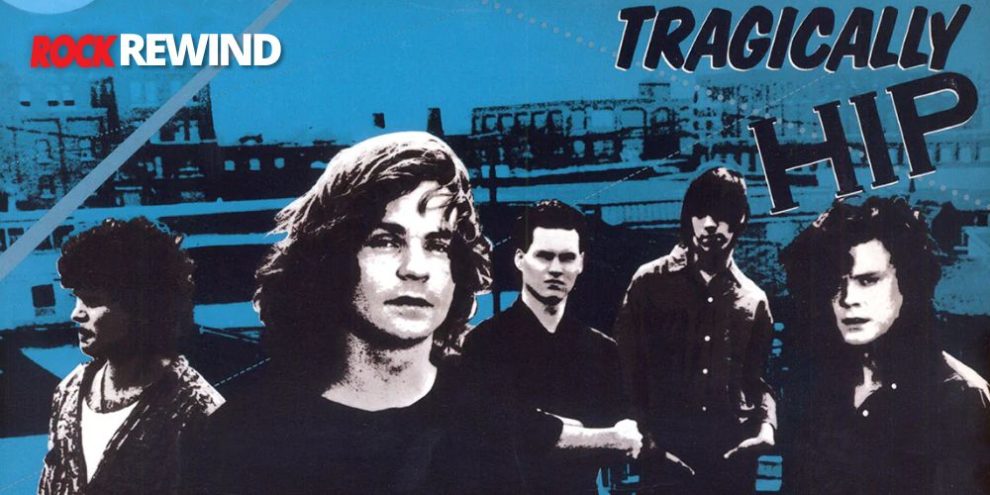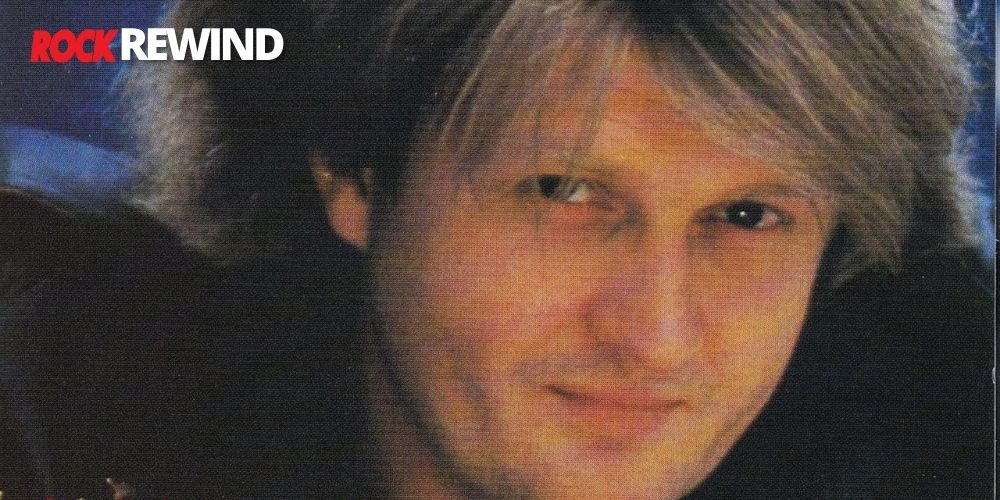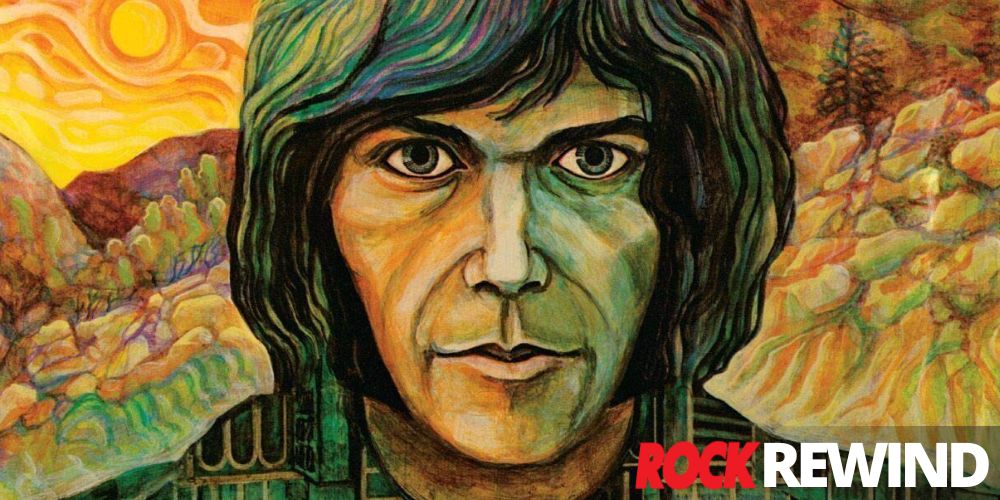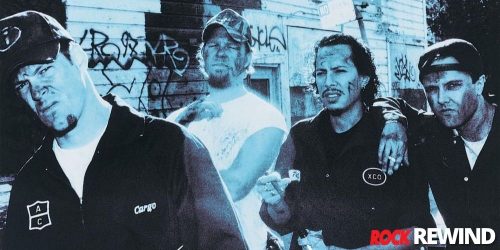Rock Rewind: How The Tragically Hip Became A Canadian Rock Legend

The Tragically Hip is a band that not only captured the hearts of an entire nation but left a permanent mark on the country’s music scene.
With their poetic lyrics, heartfelt melodies, and unwavering authenticity, The Tragically Hip became a true symbol of Canadian rock 'n' roll. Today, let's rewind the clock and celebrate the timeless legacy of this remarkable group.
How The Tragically Hip Got Started
The Tragically Hip, who are often referred to as simply The Hip, was formed in 1984. Their name came from a 1981 comedy skit by Michael Nesmith called Elephant Parts. In it, a character exclaims, “Send some money to the foundation for the tragically hip.” The phrase was also a lyric in “Town Cryer” by Elvis Costello song.
Originally, the band consisted of:
- Gord Downie (vocals)
- Rob Baker (guitar)
- Gord Sinclair (bass)
- Johnny Fay (drums)
- Davis Manning (saxophone)
All but Manning attended and met at Kingston Collegiate and Vocational Institute (KCVI), though they didn’t always play together.
Paul Langlois's brother, Michèle Langlois, once shared, “Rob [Baker] and Gord Sinclair grew up across the street from each other and were in the same grade … [They] jammed a lot together and had a band in high school called Rick and the Rodents.”
During one of KCVI’s variety shows, Rick and The Rodents competed against Downie’s band, the Slinks. But this happened a few years before The Hip formed. In fact, Baker and Sinclair were already two years into University when the group got together.
The Tragically Hip Come Together
In 1984, Baker, Sinclair, and Downie joined Johnny Fay, a younger KCVI alum, and Davis Manning, who was older than the other band members and had more musical experience.
For the next few years, the group played at venues throughout Kingston and other small venues in Ontario.
Their first performance was for a Kingston Arts Council fundraiser at the Modern Fuel Gallery on Queen Street. But their biggest fan base was out of Queen’s University campus where Baker, Sinclair, and Downie all attended. They regularly performed out of two of the campus’ student bars – Clark Hall Pub and Alfie’s (now called the Underground).
Downie’s brother Mike recalls, “While he was at Queen’s, the band just kept getting bigger and bigger. I think my parents were pretty concerned. At a certain point he had to say, ‘Look, basically I’m not going to university so I might as well just start doing music full time.’ Which he pretty much already was.”
Manning Leaves The Tragically Hip
In 1986, Manning left the band.
At the time, The Hip was beginning to seriously pursue a music career outside of their local market. Being older than the other members, Manning had already established roots in Kingston. That meant he had to make a decision – stay home or take the risky road to rock stardom.
It was this decision that resulted in a longstanding mural down an alleyway in Kingston. One night, before deciding to leave the band, Manning spray-painted a weeping eye and shooting star along with the words “The Hip Live Between Us,” referring to him and his girlfriend.
Eventually, Manning chose to stay in Kingston with his girlfriend. The mural would be used as artwork for The Hip's only live release, Live Between Us, before being painted over in 2005.
Soon after Manning’s departure, Paul Langlois joined the band. From then on, the five longstanding members would consist of:
- Gord Downie (vocals)
- Rob Baker (guitar)
- Paul Langlois (guitar)
- Gord Sinclair (bass)
- Johnny Fay (drums)
The Hip’s Debut EP
In 1987, The Hip released their self-titled debut EP.
Downie had yet to reach his full lyrical potential but hints of what was coming could be heard in songs like “Small Town Bringdown” and “Last American Exit.”
Following the release of the EP, The Hip did a cross-Canada tour.
While playing at the Horseshoe Tavern in Toronto, Bruce Dickinson, vice president of MCA Records, heard the band play. Impressed with what he saw, Dickinson signed the group to the US Label.
Finding Fame In Songwriting
The Hip’s music blends rock, blues, folk, and even country elements into a uniquely Canadian sound. But it was the band's songwriting prowess and Downie's enigmatic stage presence that set them apart.
With poetic lyrics that painted vivid landscapes of Canadian life and culture, The Tragically Hip told stories that resonated deeply with their audience.
When the band released Up To Here in 1989, it immediately grabbed the attention of music enthusiasts. Songs like "Blow at High Dough" and "New Orleans Is Sinking" showcased the band's raw energy and established them as a force to be reckoned with.
As the years rolled on, The Tragically Hip continued to release one brilliant album after another.
Each was a testament to the band's evolving sound and their ability to touch hearts with their music.
Were The Tragically Hip A Canadian Secret?
The Hip’s success in Canada is underniable. They regularly topped charts, filled out stadiums, and won accolades for their music.
But the reality is they never made it big in the US or internationally, even with a rock sound and passion that could cross borders. At least not according to the charts.
A lot of that came from the fact that The Hip didn’t believe making it in America was the only definition of success.
Downie once said, “[Interviewers] always ask us about our success or lack of success in the States, which I find absurd … While that is a story of the band, there are so many other stories."
There’s also the fact that their lyrics reflected what it was to be Canadian. They make references to landmarks, locales, and moments that speak to the Canadian experience. Even though their objective was never to be a patriotic symbol, their experiences as Canadians allowed fellow Canadians to connect more closely with these references.
In an interview, Sinclair explains, “We've never consciously tried to elicit a patriotic response from our fans, nor have we tried to embody that in our lyrics. Speaking for GD, I can tell you that we've never tried to edit ourselves in any way. You write about what you know, stories that move you in some way, or about themes you want to explore. Over the years, we have written some songs that refer to Canadian events specifically, and others that reflect our response as Canadians to other themes and issues, because of who we are and how we've been raised. That's where it begins and ends for us. We'd never write a song because it was Canadian, nor would we avoid it.”
All of this said it’s not that their songs couldn’t resonate with other people from around the world. There were many who adored their music outside of Canada.
But it wasn’t what fueled The Hip’s success.
RELATED: Remembering the fallen with The Trews ...
The Tragically Hip Discography
Since 1984, The Tragically Hip has put out:
2 live albums – Live Between Us (1997) and Live At The Roxy (2022)
1 box set – Hipeponymous (2005)
1 compilation album – Yer Favourites (2005)
They’ve also released 13 studio albums …
1. Up To Here (1989)
The Tragically Hip released their debut studio album in 1989. The album won them a Juno Award for Most Promising Artists, went Platinum by March 1990, and was the #1 on RPM Magazine’s list of Top CanCon (Canadian Content) album in 1991. included some of the band’s most popular hits like “Blow at High Dough", "New Orleans Is Sinking", and "38 Years Old."
The album was released in the US, making it to #170 on the Billboard 200 while “New Orleans Is Sinking” made it to #30 on the Mainstream charts.
Prior to the album’s release, The Hip began touring Canada and the US. They also made their first appearance in Europe, selling out in Rotterdam, South Holland in the Netherlands.
2. Road Apples (1991)
The Hip’s second studio album was released in 1991. The album’s working title was Saskadelphia but the record company rejected the title. They felt it would confuse listeners.
Instead, the album was called Road Apples.
Baker recalls, “We had several names for the record, and the American label—we’re signed directly to MCA USA—felt that all of our titles were too much inside jokes, or that they sounded too Canadian ... So we said, ‘Oh, how about Road Apples,’ and of course they had no idea what road apples were in Los Angeles. They said, ‘Oh yeah! Songs that you wrote on the road! We love it!’”
BONUS FACT: Saskadelphia was later used as the title for the band’s 2021 EP.
Road Apples was the first Hip Album to chart at #1 in Canada and included hits like “Three Pistols,” “Little Bones,” and “Twist My Arm.”
It was also the last album before Downie stopped singing lyrics written by other band members.
3. Fully Completely (1992)
In October 1992, the Hip released Fully Completely, their 3rd studio album. Up until this album, the band worked with Don Smith as their producer. But MCA wanted to change things up and decided to bring on Chris Tsangaridesas producer. He had experience creating radio-friendly sounds for the American market.
In a 2015 interview, Baker explained that “The making of Fully Completely was about us wanting to learn.”
Baker continues, talking about what it was like working with Tsangaridsas. “It was very different for us. The first two albums were much more a representation of what we were doing live onstage. It was us playing live in the studio, trying to capture that live energy. And it's very hard to capture that. Chris Tsangarides's approach was, ‘Let me create the live energy. I can do it for you. You guys just work with me.’"
While MCA hoped to find Canadian-level success in the US with Fully Completely, it did not come. In Canada, however, the album reached #1 on the RPM Top 100 charts and sold 200,000 copies within the first 3 months.
Instead of a traditional tour, the Hip followed up their Fully Completely release with Another Roadside Attraction, a travelling music and arts festival.
It was also in 1992, that The Hip played at Molson Park in Barrie.
4. Day For Night (1994)
Day For Night was the first Tragically Hip album to debut at #1 in Canada and sold 300,000 units in 4 days. It was produced in New Orleans by Mark Howard who also worked with artists like Tom Waits and REM.
Darker than previous releases, Day For Night received mixed critical reviews. Still, the album debuted at #1 and was certified Platinum in less than a year.
The album also led the group to win two Junos – Entertainer of the Year and Group of the Year.
The following year, The Tragically Hip performed on Saturday Night Live. While John Goodman was the host of that particular episode, fellow Kingstonite Dan Aykroyd introduced the band.
In an interview, Downie shared, “We did reach a wider audience with SNL, but it's hard to know what attracts people to your band in the long run … Ultimately with our band, it's word of mouth. It seems to be the largest cause of The Hip outbreak — if we can align ourselves with a virus. The SNL thing, on a personal level, was easily the most intimate gig we've ever done. It's just you and the Cyclops, you know. You're looking at this camera, and all of a sudden, less becomes more. The gesture of a finger takes the place of a gesture of a whole waving arm."
5. Trouble At The Henhouse (1996)
This 1996 release was the Hip’s second #1 debut in Canada. It held the position for 4 weeks and eventually went 5x Platinum.
The album’s track listing included “Ahead By A Century,” which has become one of the band’s most popular songs.
During the album’s support tour, the band recorded a show in Detroit, Michigan. This would become their first and only live album Live Between Us, which also debuted at #1.
6. Phantom Power (1998)
The Tragically Hip's success continued in Canada with the release of Phantom Power, another #1 debut. The album produced four singles including “Something On,” “Fireworks,” “Poets,” and “Bobcaygeon.”
“Poets” topped the RPM alternative chart and stayed there for 12 weeks, longer than any other song. “Bobcaygeon” has become one of the band’s most beloved songs and won the Hip a Juno for Single of the Year in 2000. The album also won a Juno for Best Rock Album of the Year
1998 was also the year that the Hip composed “Antares.” The instrumental was used in Kurt Browning's figure skating routine.
In 1999 the band performed at Woodstock 99 and at the Scotiabank Arena (formerly the Air Canada Center) when it opened.
7. Music @ Work (2000)
Heading into the 2000s, The Tragically Hip’s success waned only a little. While the 1990s would be their most commercially successful decade but they continued to top charts and win awards.
Their first release in the new millennium was Music @ Work, which debuted at #1 and won a Juno for Best Rock Album in 2001.
8. In Violet Light (2002)
The Tragically Hip’s 8th studio album debuted at #2. It came with a membership card for The Hip Club. Those who joined the online fan club received 3 bonus tracks.
That same year, the Hip performed at the 2002 Olympic Winter Games in Salt Lake City and played for Queen Elizabeth II as part of a command performance. They also appeared in the movie Men With Brooms.
9. In Between Evolution (2004)
In Between Evolution debuted at #1 in Canada. The album contained some of the shortest and fastest songs ever recorded by the band. Songs included “Vaccination Scar,” “It Can’t Be Nashville Every Night,” and “Heaven Is A Better Place Today.”
The last was a tribute to Dan Snyder, a professional hockey player who died in a car crash, and the young men being sent off to war in response to the 2003 invasion of Iraq.
10. World Container (2006)
In 2005, the Hip released Yer Favourites, a compilation album made up of 37 songs chosen by fans.
The following year, the band released their 10th studio. World Container debuted at #2 on the Canadian charts and was certified Platinum the same month it was released.
The album was the first to be produced by Bob Rock and included the lead single “In View” which topped the charts.
11. We Are The Same (2009)
We Are The Same was the Hip’s eighth album to debut at #1 and their last with Bob Rock, though he would later work with Downie on his solo album, Lustre Parfait.
To promote the album, the Hip invited George Stoumboulopoulos to do a live interview at The Bathouse Recording Studio. Located in Bath, Ontario, it was where most of the album’s recordings took place. The interview and live performances of their new material played live in 80+ theaters across the country.
12. Now For Plan A (2012)
In 2012, The Tragically Hip released their shortest album to date. Coming in at #3, the album was the first since Up To Here to debut below #2. In the US, it was the highest-performing album, coming in at #129 on the US Billboard 200.
That same year, Andy Keen released a documentary called Bobcaygeon. The film showcased a Tragically Hip concert in Bobcaygeon, Ontario, and received a 2013 Juno for Best Music DVD.
Following these releases, the band took a longer-than-usual break from recording.
13. Man Machine Poem (2016)
The 2016 release of Man Machine Poem, was the last studio album released by The Tragically Hip before lead singer, Gord Downie, passed away. It came out shortly after the band announced Downie’s cancer diagnosis, though the songs were written and recorded prior to finding out that he was sick.
Originally the album was to be named Dougie Stardust, but following Bowie’s death in January 2016, the album was renamed after a song from the Hip’s previous album.
Man Machine Poem debuted at #1 in Canada and won a Juno for Rock Album Of The Year. According to Exclaim! Writer Stuart Henderson, the album was "a darkly illuminated, late-career curveball likely to please and confound in equal measure. Rarely since their mid-1990s heyday has the multi-platinum-selling band sounded so intent on crafting something different."
In the US, the album came in at #179 on the Billboard 200 and #22 on Top Rock Albums.
Despite Downie’s diagnosis, The Tragically Hip followed up their album release with a tour. Tickets to all 15 of their shows sold out within minutes and each city held fundraisers in advance of the performances to raise money for the Gord Downie Fund for Brain Cancer Research established by the Sunnybrook Foundation.
On October 17, 2017, Gord Downie passed away. His death was mourned nationwide.
Prior to his death, Downie had shared that the Hip were working on a new record and had up to four records in the vault.
The Tragically Hip: Canada’s Rock Band
Although they never achieved the same level of international success as some of their contemporaries, The Tragically Hip's impact extends far beyond chart positions and record sales.
Their music resonated with fans on a profound level, reflecting the experiences, landscapes, and moments that define the Canadian identity. Their songs became a part of the cultural fabric of the nation, evoking a sense of nostalgia and connection that transcended borders.
With each album they released, The Hip continued to evolve, exploring new sounds while staying true to their roots. Their live performances were legendary, filled with an energy and passion that captivated audiences.
They were not just a band; they were Canada's rock band, beloved by fans from coast to coast.
Read More Rock Rewinds
Snag Our Newsletter
Hit that button like you’re pressing play on your favourite track. get exclusive content, stories, and news.











